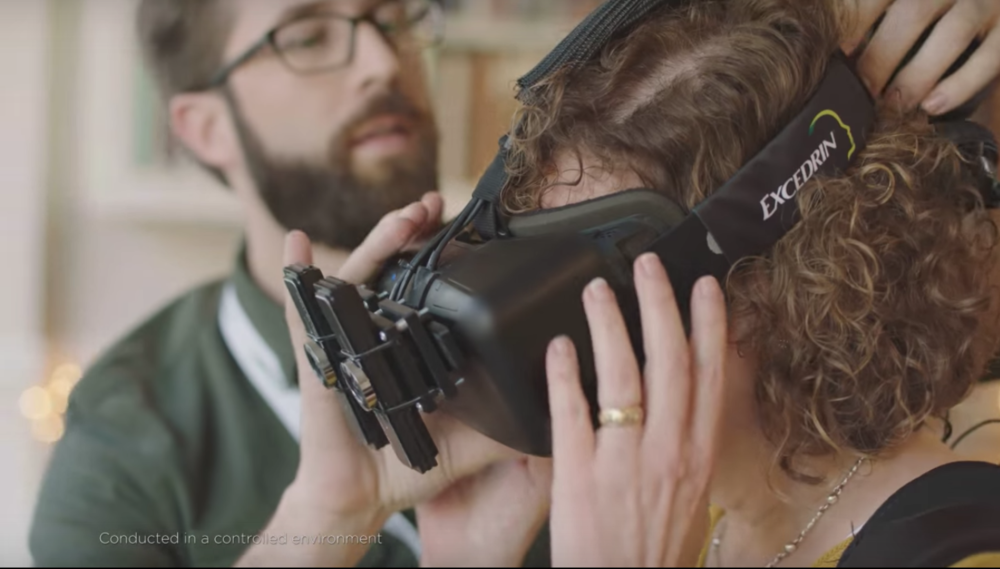My colleague Perry Simpson wrote a compelling case for companies to avoid VR in its early stages – adoption is still low and we don’t really know what consumers’ expectations will be for brands’ participation. But every truism requires edge cases and a good one is a recent Excedrin campaign.
The pain medicine manufacturer has a TV spot and attendant web campaign that uses VR to educate the populace on migraines. The commercial voice over points out how difficult it is for migraine sufferers to explain their malady in a way that non-sufferers can understand. Enter VR and a perception-enhancing ability to emulate the pains of migraines.
Another example of healthcare-related VR comes from Drew Olanoff, a Silicon Valley writer/entrepreneur who was behind the cancer awareness campaign #BlameDrewsCancer. Olanoff called attention to the torpor of spending months on end at a hospital and the yearning for any new immersive experience. Getting lost in a Netflix show doesn’t change the fact that your vitals monitor and saline drip is in the corner of your eye. Enter VR: the promise of a truly immersive experience to temporarily transform one’s hospital room into a seat next to a babbling brook or an open field. To address this possibility, he has created the Balboa Foundation, a nonprofit consortium of web entrepreneurs, game designers and technologists to service this constituency. It is clear that healthcare and nonprofit can be a leading example of how brands and organizations can provide value through VR.








